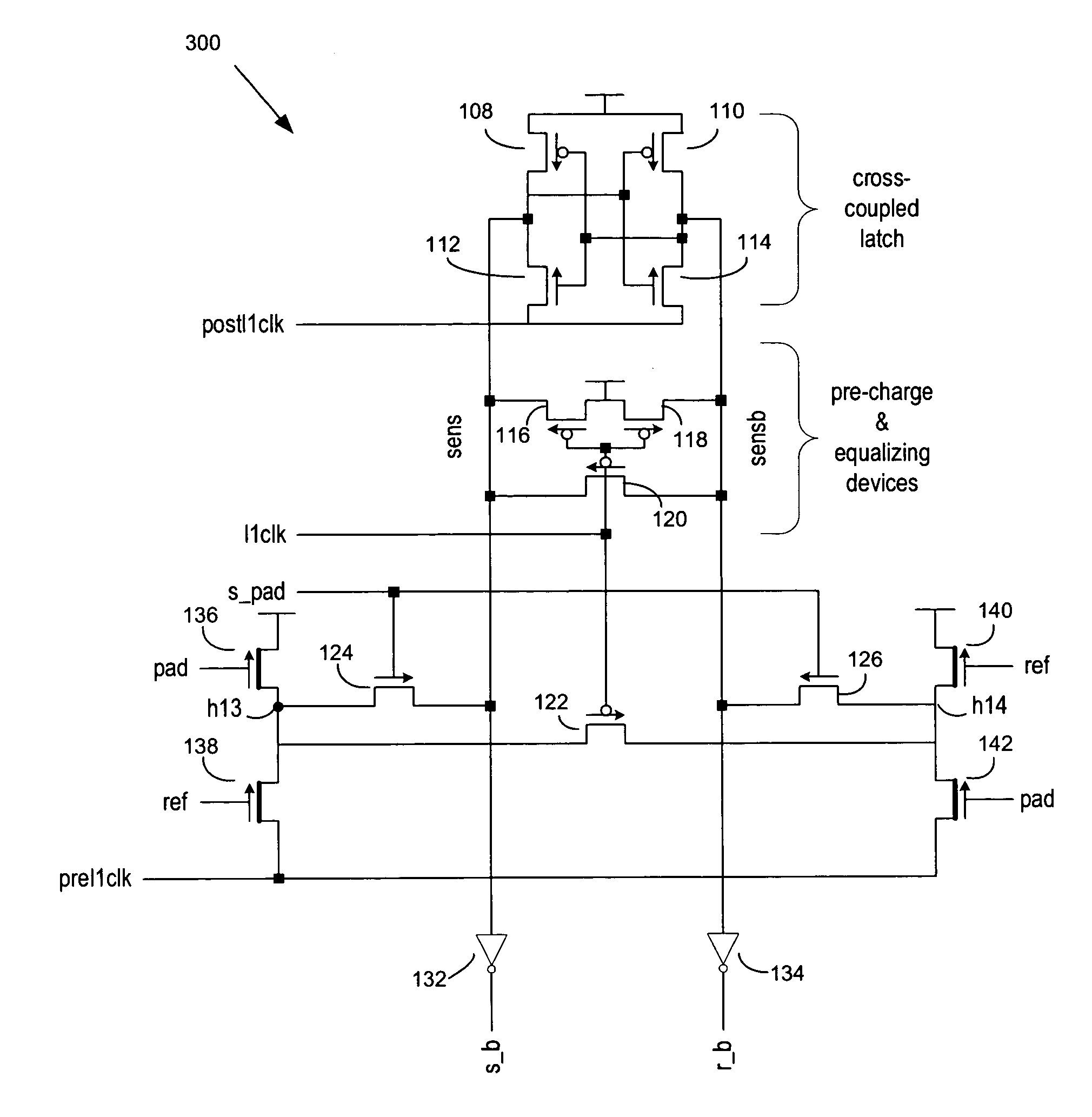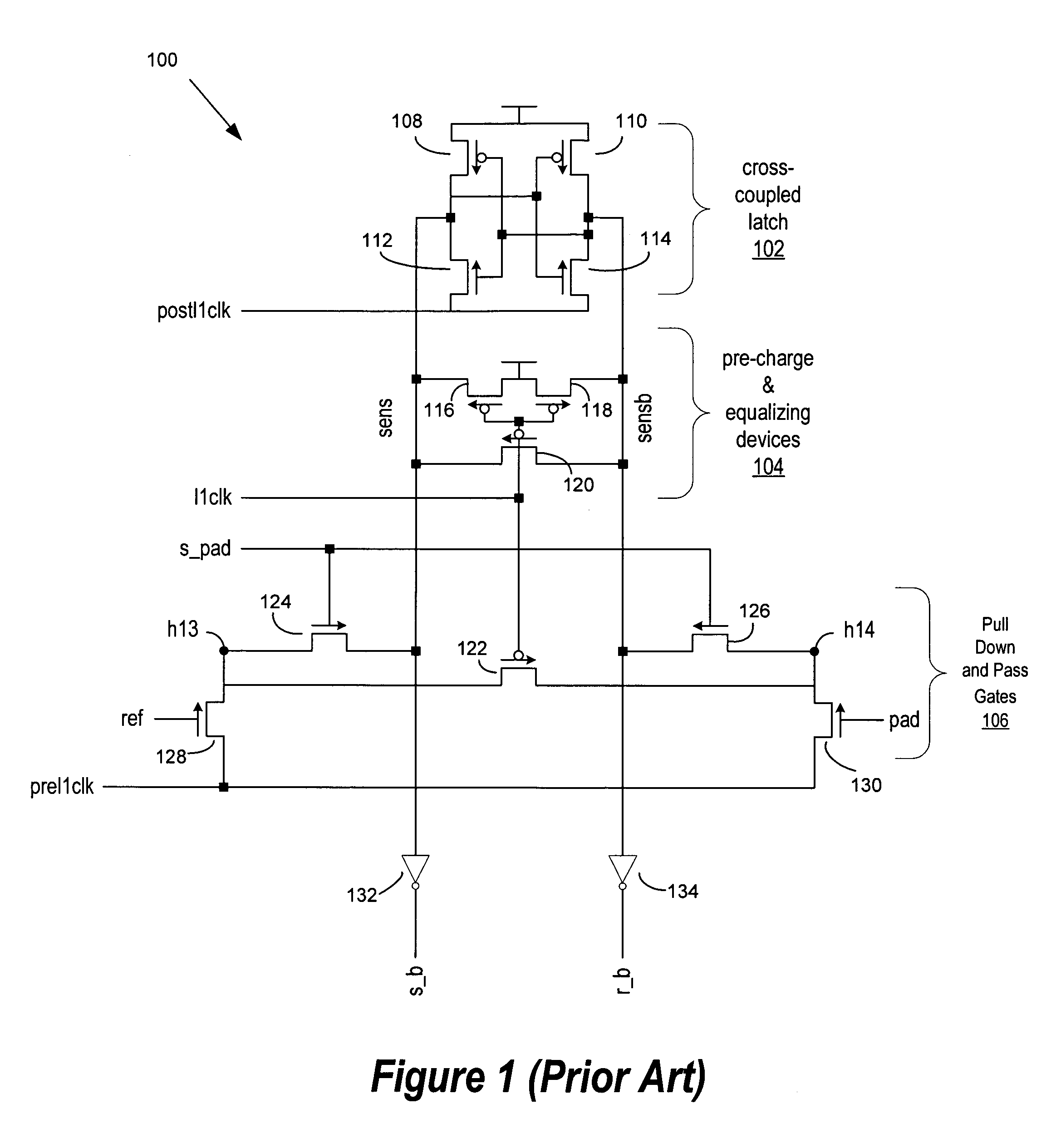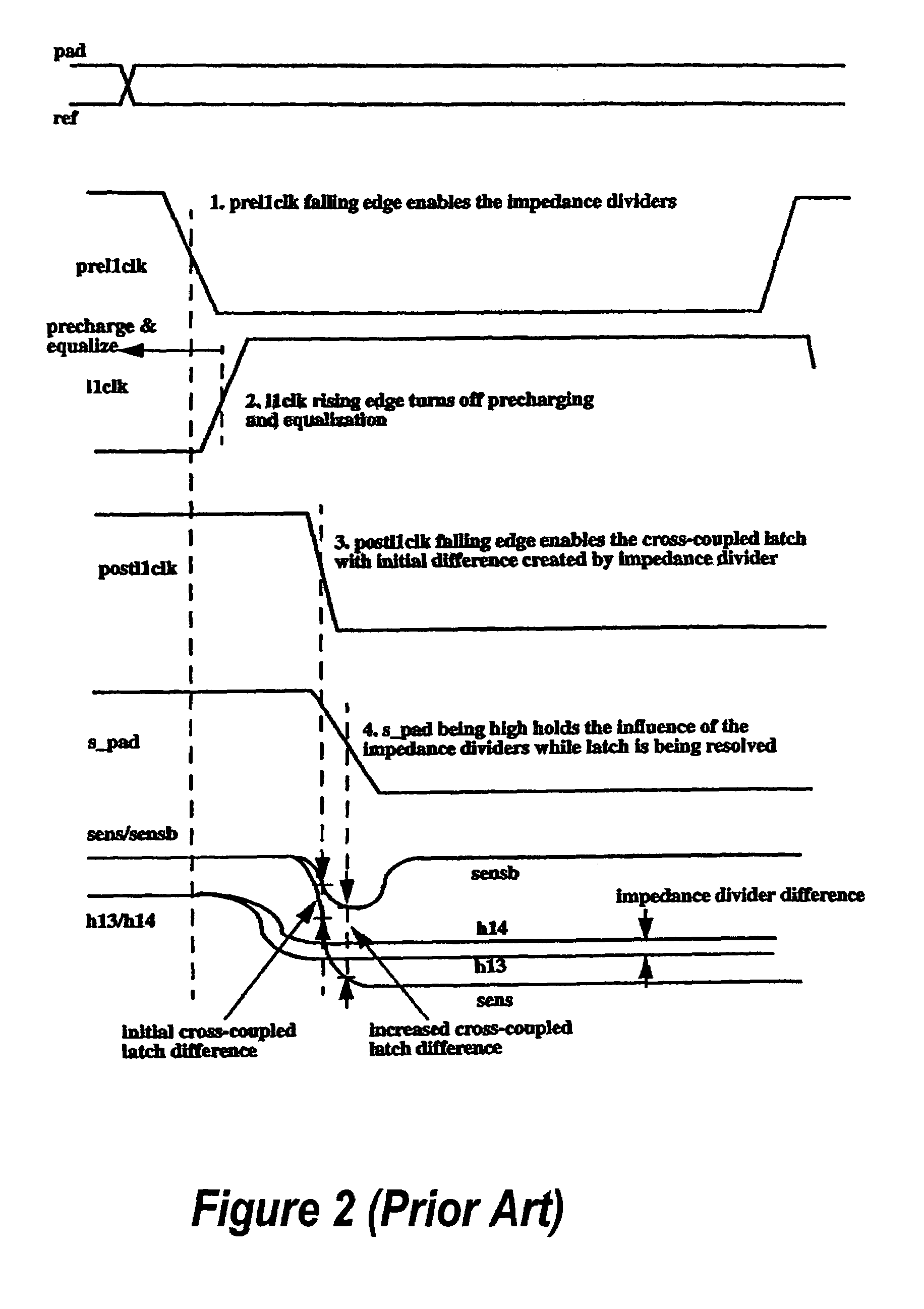Differential sense amplifier latch for high common mode input
- Summary
- Abstract
- Description
- Claims
- Application Information
AI Technical Summary
Benefits of technology
Problems solved by technology
Method used
Image
Examples
Embodiment Construction
[0013]FIG. 1 is a schematic representation of a conventional sense amplifier latch 100. The sense amplifier latch 100 is broadly comprised of a cross-coupled latch 102, that generates rail signals “sens” and “sensb,” precharging and equalization devices 104, and the pull-down and pass gate devices 106 for inputs “pad” and “ref.” The cross-coupled latch 102 comprises first and second p-channel transistors 108 and 110 connected in a cross-coupled arrangement with first and second n-channel transistors 112 and 114. The sources of the n-channel transistors 112 and 114 are connected to receive a “postllclk” signal discussed in greater detail below. The outputs of the cross-coupled latch 102 are carried on the “sens” and “sensb” rails. The pre-charge and equalizing devices module 104 comprises four p-channel transistors 116, 118, 120, and 122 that have their gates connected to receive an “llclk” input discussed in further detail below in connection with the timing diagram of FIG. 2. The p...
PUM
 Login to View More
Login to View More Abstract
Description
Claims
Application Information
 Login to View More
Login to View More - R&D
- Intellectual Property
- Life Sciences
- Materials
- Tech Scout
- Unparalleled Data Quality
- Higher Quality Content
- 60% Fewer Hallucinations
Browse by: Latest US Patents, China's latest patents, Technical Efficacy Thesaurus, Application Domain, Technology Topic, Popular Technical Reports.
© 2025 PatSnap. All rights reserved.Legal|Privacy policy|Modern Slavery Act Transparency Statement|Sitemap|About US| Contact US: help@patsnap.com



